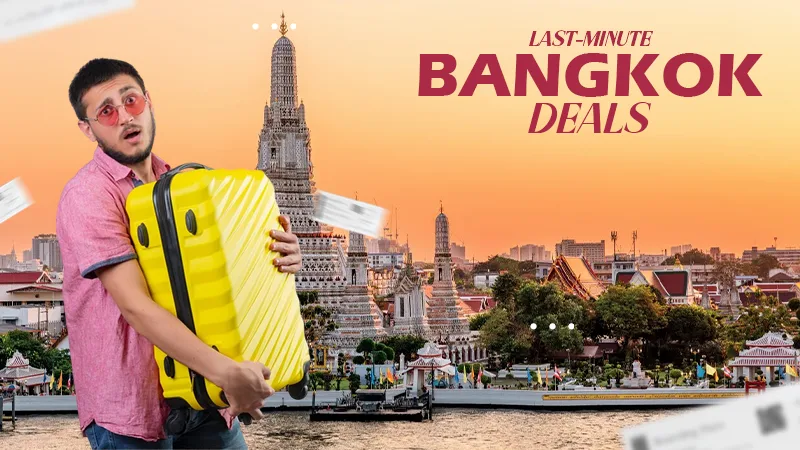
Sadly, the nature of travel photography means that we don’t always have the ideal circumstances to get amazing pictures while on the road. Though ideal for adventure, shifting landscapes and novel, unpredictable locations frequently result in too many moving components to completely control the quality of your photos.
The good news is that you can work to improve even the most unimpressive travel photography conditions with a few simple camera adjustments and efficient photo-editing methods.
It is possible to transform unfavourable circumstances into creative opportunities by embracing spontaneity, adjusting to the light or environment you are given, and challenging yourself to break old habits.
In this guide, we explore practical ways to help elevate your travel photography and even imbue your travel shots with some elements of storytelling, no matter where in the world you’re snapping from.
Let’s begin!
Key Takeaways
- Understanding the need for a pro-grade editing tool
- Looking at the shift in your perspective
- Looking at the important details
- Decoding intentional edits
1. Get a Pro-Grade Editing Tool Under Your Belt
You don’t always have the luxury of perfect timing, perfect weather or perfect light. But you can have the perfect backup plan. Whether it’s soft focus, harsh shadows, flat light, or distracting objects, a professional, portable photo editing tool allows you to make adjustments later.
Here, we recommend looking for photo editing software that works seamlessly on both desktop and mobile and lets you fix things like exposure, colour and other details quickly.
If you can find one that includes AI-powered tools to handle tricky edits fast and an AI image upscaler to recover quality from low-light or motion-blurred shots. For example, Adobe’s Photoshop has these AI generative features now, which means you can remove unwanted objects automatically (especially useful when a perfect scene is ruined by strangers, signage or power lines).
If you can, try to sign up for a few free trials for a wide variety of editing tools before you set off on your adventures. This may help you find the right tool that fits your work style. With the right tool supporting you, even your imperfect travel moments become usable, editable and shareable.
Interesting Facts
The travel photography services market was valued at an estimated $1.48 billion in 2024 and is expected to grow to $2.20 billion by 2032, with a CAGR of 5.07%.
2. Play with Light Rather than Against it
Travel often puts you in some pretty chaotic situations to say the least – and despite all the hubbub, you’ve simply got to get the shot you’re planning for during the time that you expect to be at that location. So instead of forcing the perfect lighting, it’s well worth simply experimenting with how different conditions may affect your images.
For instance, when the sky starts to darken, you can try shooting silhouettes at sunrise or sunset and use shadows to frame alleyways or architecture. Experimenting with different lighting conditions can help you learn how to adjust your camera as needed, no matter what kind of cloud coverage and light availability you’re having to contend with.
Another example is playing with similar or contrasting shades, like a monochromatic theme when embracing soft morning haze or harsh midday contrast. When the sun is rising or setting, you can try capturing backlit subjects to create depth. All of these variations give your photos character beyond perfect exposure.
3. Shift Your Perspective (Literally)
One of the simplest ways to elevate your travel shots is to experiment with angles. Shoot from above, kneel to the ground or wander a few metres left or right to find a fresh composition. For some quick perspective tricks, try:
- low angles for dramatic architecture
- high vantage points for markets or city chaos
- reflections from puddles, glass or water
- framing subjects through doorways, windows or foliage
Remember, travel environments are full of natural frames, so look out for them everywhere and use them to your advantage wherever you can.
4. Chase and Capture Movement
Travel photography becomes far more exciting and dynamic when you lean into the movement around you. If you’ve only ever taken still shots, try your hand at motion blur type photography. Motion blur from passing tuk-tuks, busy markets, swaying palms, ocean waves or when stargazing can add story and energy to a scene.
To start experimenting, you can try using slower shutter speeds to blur movement intentionally, creating an almost ‘calm amidst the chaos’ effect that captures the activity at your destination in static clarity. You can also use panning shots to overcome movement or to capture movement that goes against the motion of your subject.
5. Use Colour as a Storytelling Tool
Travel exposes you to new palettes in every location, and seeing these colours will likely transport you right back to the towns and villages that showcase them. Whether it be terracotta villages in Mexico, neon city streets in Tokyo, to deep Mediterranean blue oceans, and pastel coastlines.
As a travel photographer looking to develop your own unique eye, one of the best things you can do is train yourself to notice the colours around you and use them intentionally in your storytelling.
Some ways you can use colour in your photography are:
- contrasting colours (sandy desert on a dune buggy adventure + bright clothing or blue Mediterranean with the sea of white painted houses in Santorini)
- tonal harmony (warm-toned weekly markets or temples)
- simplifying busy scenes using colour blocking
- adjusting hues during editing to strengthen the mood
6. Keep an Eye on the Details
While sweeping landscapes and iconic landmarks are undeniably captivating, the true personality of a destination often lies in the small, often overlooked details. Street tiles, vibrant patterns on fabrics, intricate signage, hands preparing local dishes or unique architectural quirks can all tell a story about the place you’re visiting. Capturing these details adds texture and depth to your travel narrative, giving your photo collection more layers than just wide shots.
Including the finer, more intricate elements helps break up a gallery or album dominated by landscapes or cityscapes, giving a refreshing dose of visual variety and maintaining the viewer’s interest. Perhaps most importantly, detailed shots convey a stronger sense of place, allowing your audience to feel immersed in the environment you’re exploring. In many cases, these small moments and subtle gestures become the images people remember most.
7. Edit with Intention
Editing is where your creative vision truly comes together. Rather than applying filters randomly, take a deliberate approach to develop a consistent look that reflects the mood and story of your trip.
Simple adjustments can transform ordinary photos into images you can’t stop thinking about. Consider things like adjusting exposure and contrast to enhance clarity, or correcting white balance to make sure your colours match what you actually experienced.
Selective edits allow you to brighten faces, subtly darken backgrounds or draw attention to your subject, creating a clear focal point. Enhancing skies, shadows, or textures adds depth and dimension, giving your images a polished, professional feel, but be careful not to go overboard on the enhancement – a little goes a long way. Finally, removing distractions can be really powerful in making sure that viewers’ eyes are guided to the elements that matter most.
Don’t Aim for Perfection, Aim for Authenticity
Just like a great adventure, great travel photography is about making the most of your resources. With a few creative experiments, a willingness to adapt and a powerful editing toolkit in your pocket, you can turn rushed moments, bad lighting and unpredictable environments into compelling images that immortalise your tales as a traveller.
What are the 7 C’s of photography?
Composition, contrast, clarity, candid, cropping, color, and cutline/caption.
What are the benefits of travel photography?
It serves as storytellers and educators on the world’s rich diversity.
What are the 7 principles of photography?
Pattern, Balance, Negative Space, Grouping, Closure, Colour and Light/Shadow.










